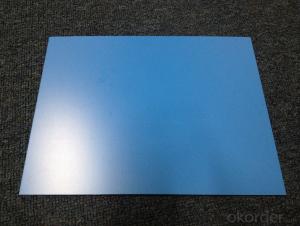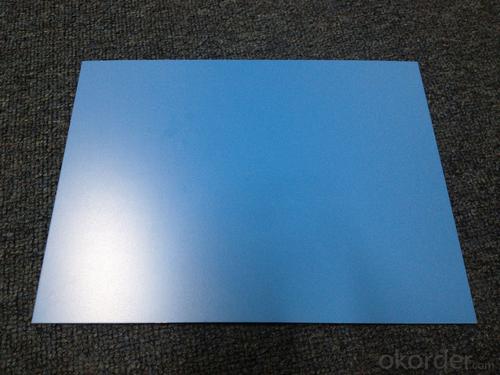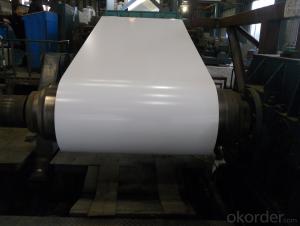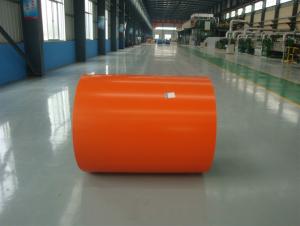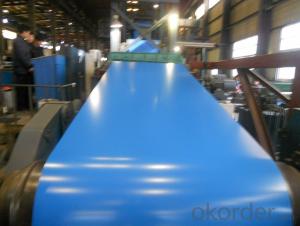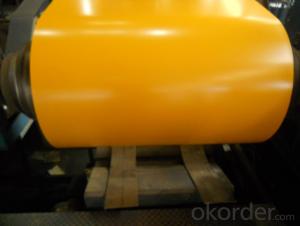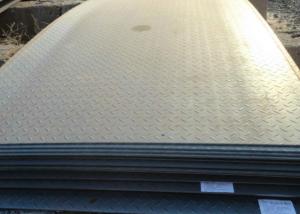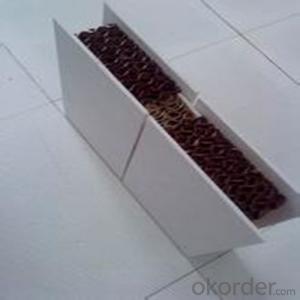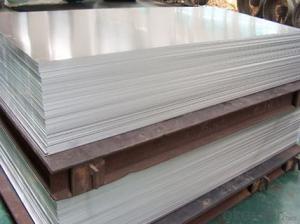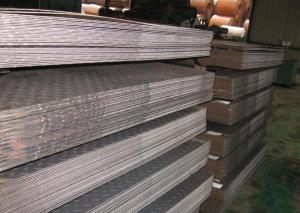YY PRE-PAINTED ALUZINC STEEL COIL
- Loading Port:
- Tianjin
- Payment Terms:
- TT OR LC
- Min Order Qty:
- -
- Supply Capability:
- 12000 m.t./month
OKorder Service Pledge
Quality Product, Order Online Tracking, Timely Delivery
OKorder Financial Service
Credit Rating, Credit Services, Credit Purchasing
You Might Also Like
PRE-PAINTED ALUZINC STEEL SHEET
THICKNESS:0.18mm-1.5mm
WIDTH:900mm-1250mm
COATING MASS:AZ30-AZ180
PAINT:PE、HP、HDP、PVDF、SMP、MATT、PVDF
COLOR:RAL Scale
COIL INNER DIAMETER:508mm/610mm
COIL WEIGHT:3mt-7mt
BASE MATERIAL:Hot-dip Aluzinc Steel
- Q: How are steel sheets tested for hardness?
- Steel sheets are tested for hardness using various methods, one of the most common being the Rockwell hardness test. In this test, a small indenter, usually a diamond or a hardened steel ball, is pressed into the surface of the steel sheet with a known force. The depth of penetration is measured and converted into a hardness value using a standardized scale. Another method used is the Brinell hardness test, where a hardened steel ball is pressed into the surface of the steel sheet under a specific load. The diameter of the indentation is measured and used to calculate the hardness value. Additionally, there is the Vickers hardness test, which utilizes a pyramid-shaped diamond indenter. The test is similar to the Rockwell test, but instead of measuring the depth of penetration, the test measures the diagonal length of the indentation to determine the hardness value. These hardness tests provide valuable information about the mechanical properties of steel sheets, such as their resistance to deformation and wear. The results of these tests help ensure that the steel sheets meet the required specifications and can be used in various applications where hardness is a critical factor.
- Q: Are steel sheets suitable for solar panel mounting?
- Yes, steel sheets are suitable for solar panel mounting. They provide a strong and stable base for the panels, ensuring they are securely installed and can withstand various weather conditions. Additionally, steel sheets are durable and long-lasting, making them a reliable choice for solar panel mounting systems.
- Q: Can steel sheets be used for manufacturing HVAC systems?
- Yes, steel sheets can be used for manufacturing HVAC systems. Steel is a common material choice due to its strength, durability, and thermal conductivity properties, making it suitable for constructing various components of HVAC systems such as ductwork, housing units, and heat exchangers.
- Q: How durable are steel sheets?
- Steel sheets are known for their exceptional durability. They are highly resistant to impact, corrosion, and extreme weather conditions, making them an ideal choice for various applications, including construction, automotive, and manufacturing industries. With proper maintenance, steel sheets can maintain their strength and integrity for decades, ensuring long-lasting performance and reliability.
- Q: Are steel sheets suitable for food processing facilities?
- Food processing facilities find steel sheets to be an excellent choice due to their many advantageous qualities. Firstly, steel sheets are non-porous, meaning they do not absorb moisture, bacteria, or odors, resulting in a highly hygienic surface. This prevents bacteria growth and reduces the risk of contamination, ensuring the safety and quality of the processed food. Secondly, steel sheets are easy to clean and maintain. They can withstand frequent cleaning and sanitization without corroding or degrading. Stainless steel, in particular, is resistant to corrosion, rust, and staining, making it ideal for maintaining cleanliness in food processing facilities. Moreover, steel sheets exhibit exceptional durability and strength, guaranteeing their longevity and reliability in food processing operations. They can withstand heavy use, high temperatures, and mechanical stresses commonly encountered in these facilities. Additionally, steel sheets have a high melting point, making them fire-resistant and thereby ensuring the facility's safety. Furthermore, steel sheets offer versatility as they can be fabricated into various shapes and sizes to meet the specific requirements of food processing facilities. They can be used for walls, floors, work surfaces, storage units, and equipment, seamlessly integrating into the facility's infrastructure. In conclusion, steel sheets are highly suitable for food processing facilities due to their hygienic properties, ease of cleaning, durability, and versatility. They contribute to maintaining a safe and sanitary environment, which is crucial for producing high-quality and uncontaminated food products.
- Q: Can steel sheets be galvanized or coated with protective layers?
- Yes, steel sheets can be galvanized or coated with protective layers. Galvanizing is a process of applying a protective zinc coating to steel to prevent it from rusting. This is achieved by either hot-dip galvanizing, where the steel sheet is immersed in a bath of molten zinc, or by electroplating, which involves applying a zinc coating through an electrolytic process. In addition to galvanizing, steel sheets can also be coated with various protective layers. These coatings can include paint, epoxy, powder coatings, or other specialized coatings designed to enhance resistance to corrosion, chemicals, or abrasion. These protective coatings not only provide an aesthetic appeal but also serve as a barrier against environmental factors that could potentially damage the steel. The choice of galvanizing or coating a steel sheet depends on the specific application and the level of protection required. Galvanizing offers excellent corrosion resistance and is commonly used in outdoor applications where the steel is exposed to moisture, such as construction, automotive, and infrastructure industries. Coatings, on the other hand, provide a wide range of protective properties, making them suitable for various applications, including indoor environments or where specific chemical resistance is required. Ultimately, both galvanizing and coating steel sheets with protective layers are effective methods to enhance their durability and prolong their lifespan. The selection of the appropriate method depends on factors such as the intended use, environmental conditions, and budget.
- Q: What is the maximum length of a steel sheet?
- The maximum length of a steel sheet can vary due to multiple factors like the steel mill's manufacturing capabilities, transportation limitations, and customer requirements. In general, steel sheets can range from a few feet to several hundred feet in length. Large-scale steel mills have the ability to produce exceptionally long sheets, often surpassing 100 feet or more. These extended lengths find their purpose in significant construction projects like bridges, industrial buildings, or shipbuilding. However, it is important to consider practical constraints when determining the sheet's maximum length, such as the size of transportation vehicles or handling equipment limitations. Hence, while manufacturing lengthy steel sheets is possible, practical considerations may limit their effective utilization in different applications.
- Q: What is reinforced steel plate?
- Refers to the use of hot rolled slab of slab or as raw materials by step heating furnace, high pressure water removal after entering the rolling mill, and then finishing the final, after the formation of laminar cooling and coiling plate.
- Q: Do steel sheets rust?
- Yes, steel sheets can rust if they are not properly protected or coated.
- Q: Can steel sheets be rolled into cylinders or tubes?
- Yes, steel sheets can be rolled into cylinders or tubes through a process called tube or cylinder rolling.
Send your message to us
YY PRE-PAINTED ALUZINC STEEL COIL
- Loading Port:
- Tianjin
- Payment Terms:
- TT OR LC
- Min Order Qty:
- -
- Supply Capability:
- 12000 m.t./month
OKorder Service Pledge
Quality Product, Order Online Tracking, Timely Delivery
OKorder Financial Service
Credit Rating, Credit Services, Credit Purchasing
Similar products
Hot products
Hot Searches
Related keywords
